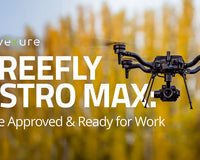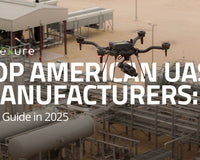In recent years, the retail landscape has faced a formidable and escalating challenge: organized retail crime (ORC). This phenomenon, far from being petty or opportunistic theft, is a sophisticated and coordinated effort by criminal groups that systematically target retail stores, causing significant financial losses and undermining the safety and stability of communities. The National Retail Federation reports a disturbing uptrend in ORC, with losses running into billions annually, affecting not only the retailers but also the broader economy and local communities.
The surge in ORC comes at a time when law enforcement agencies are stretched thin, grappling with a rise in violent crimes and a shortage of resources to address the multifaceted nature of retail theft. The impact on retail stores is profound, with many experiencing frequent, brazen thefts that erode profits and endanger employees and customers. Beyond the immediate financial losses, the ripple effects on local economies and community well-being are substantial, as these crimes contribute to a sense of insecurity and can deter shopping in affected areas, further straining local businesses.
Technology stands out as a beacon of hope among the arsenal of tools available to law enforcement to combat ORC. Surveillance systems, both private and public, equipped with advanced features like License Plate Reader (LPR) technology, offer a way to identify suspects and track their movements swiftly. Real-Time Crime Center (RTCC) technologies, such as Flock or Fusus, provide a platform for monitoring crime patterns and facilitating seamless communication between departments and agencies, enabling a more coordinated response to ORC.
At the forefront of this technological revolution are drones, increasingly adopted in a Drone as a First Responder (DFR) capacity. Drones offer an unparalleled advantage by providing immediate aerial surveillance at a crime scene, capturing high-quality video evidence that can be crucial in identifying perpetrators and securing convictions.
As we delve deeper into the challenges posed by ORC and explore the technological advancements at law enforcement's disposal, it's clear that collaboration between public safety agencies and industry leaders is critical.
The Escalating Challenge of ORC
According to the Retail Industry Leaders Association (RILA), ORC is not merely a series of isolated incidents but a widespread issue affecting retailers nationwide. The complexity and organization behind these criminal enterprises resemble that of significant crime syndicates, complete with hierarchies, extensive planning, and a keen exploitation of technological and security vulnerabilities.
Evolving Tactics
Modern ORC groups are known for their adaptability and use of technology. From coordinated smash-and-grab raids that can overwhelm even prepared stores to intricate online fencing operations that sell stolen goods across the globe, these criminals are constantly innovating. The International Association of Chiefs of Police (IACP) highlights that the transition from physical to digital platforms has expanded the reach and anonymity of these criminal networks, making it increasingly challenging for law enforcement to track and apprehend them.
Impact on Retailers and the Economy
The National Retail Federation's (NRF) latest National Retail Security Survey reports that retailers lose billions yearly to ORC, with the average loss amounting to millions per retailer. This impacts the bottom line of affected businesses and contributes to higher prices for consumers and job losses within the retail sector, further exacerbating the economic toll.
Challenges Faced by Law Enforcement:
Law enforcement agencies are in a relentless battle against ORC, hindered by several key challenges:
- Resource Allocation: When violent crime rates rise, police departments often allocate more personnel and resources to immediate threats to public safety, leaving fewer resources available to combat retail crime.
- Jurisdictional Boundaries: ORC networks frequently operate across city, state, and even national boundaries, complicating the legal and operational framework for law enforcement agencies pursuing these criminals.
- Data and Information Sharing: The need for a centralized database for incidents of retail theft and limited information sharing between jurisdictions and the retail industry hampers the ability to identify patterns, connect related cases, and effectively dismantle ORC networks.
- Legislative Hurdles: Efforts to combat ORC are further complicated by legal challenges. The variance in state laws regarding the definition and prosecution of retail theft means that activities classified as misdemeanors in one state could be felonies in another, leading to inconsistencies in enforcement and penalties.
Leveraging Technology in the Fight Against ORC
Technology has emerged as a pivotal ally in the battle against organized retail crime (ORC). Advanced tools and systems are not just augmenting the capabilities of law enforcement agencies; they are transforming the strategies employed to prevent, respond to, and investigate retail thefts. Here's how technology is making a difference:
1. Automated License Plate Recognition (ALPR) Cameras
ALPR technology has proven to be a game-changer in identifying and tracking vehicles involved in ORC activities. By capturing and analyzing license plate data, these cameras offer a fast and efficient means of linking suspects to crime scenes. However, the real power of ALPR lies in integrating private and municipal camera networks. Retailers, through their loss prevention divisions, are increasingly partnering with law enforcement to share access to their ALPR systems, creating a comprehensive surveillance network extending far beyond the confines of individual properties.
2. Cameras with Facial Recognition Technology
Positioned at strategic locations such as entrances, exits, and critical areas within commercial properties, facial recognition cameras are becoming essential in monitoring individuals' flow and identifying known offenders. These systems can alert law enforcement and retail security personnel in real time when a person of interest enters a monitored zone, allowing for immediate action.
3. Real-Time Crime Centers (RTCC)
RTCCs leverage platforms like Flock and Fusus to integrate directly with private and municipal surveillance systems, including retail organizations. This integration facilitates immediate access to high-quality images and videos of suspects and their vehicles, significantly enhancing law enforcement's ability to track and apprehend individuals involved in ORC. Retailers that grant law enforcement access to their surveillance feeds play a crucial role in this ecosystem, providing the detailed visual evidence necessary for building strong cases in court.
4. Unmanned Aerial Systems (UAS)
Drones, or UAS, offer a rapid deployment option that can be crucial in the immediate aftermath of a retail theft. As part of a "Drone as a First Responder" (DFR) program, drones can be on the scene within minutes, providing live aerial footage that aids in assessing the situation, tracking suspects, and gathering evidence before patrol units arrive. The aerial perspective of drones is invaluable for tracking suspects' movements and potential escape routes and collecting video evidence that can be used in court. The ability of drones to cover large areas quickly and provide real-time intelligence makes them an indispensable tool in the fight against ORC.
Advancing Public Safety with UAS Technology
One of the most immediate concerns is the limited choices for federal agencies. The ASDA could inadvertently stifle innovation by restricting access to a broad range of drone technologies, particularly those that have become industry standards for performance and reliability. The competition, a driving force behind technological advancements, may be dampened if leading players like DJI and Autel Robotics are sidelined in the federal sphere. This could lead to a slower pace of innovation for the drones themselves and the ancillary technologies and services that have grown around these platforms.
As we navigate the complexities of ORC, the role of advanced technology in enhancing the capabilities of law enforcement agencies cannot be overstated. From Automated License Plate Recognition (ALPR) cameras and facial recognition systems to Real-Time Crime Centers (RTCC) and Unmanned Aerial Systems (UAS), the technological arsenal available to fight ORC is more powerful and effective than ever. These tools aid in the immediate response to incidents and contribute to a broader strategy of prevention, investigation, and prosecution, strengthening the overall security of communities and businesses.
Advexure is committed to empowering public safety agencies with cutting-edge UAS solutions. Our proven track record in assisting police departments and public safety agencies nationwide to integrate drones into their operations has led to more suspect apprehensions, better resource allocation, and, ultimately, more lives saved.
Contact Advexure today and take the first step towards transforming your public safety capabilities with the power of UAS technology. Our team of Part 107-certified pilots, former public safety officials, and drone experts stand by to help.










